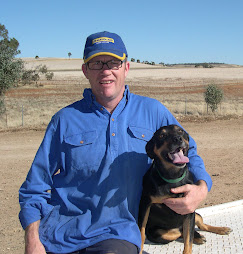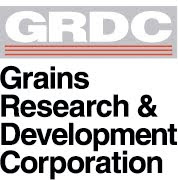Dwayne is now a professor of Plant Science at South Dakota State Uni. He is the research manager of Dakota Lakes Research Farm. The research farm has a carter to create conditions appropriate for research scientists from the South Dakota State Uni and VSDA. To accommodate this Dwayne has set up three rotations:
- Winter Wheat – Corn – Broadleaf
- Spring Wheat- Winter Wheat – Corn – Broadleaf
- Winter Wheat- Broadleaf – Corn - Broadleaf
Seeding Through Corn Silage
The broadleaf crops grown prior to winter wheat have to be a cool season one eg peas , canola & linseed.Peas Sown at Uniform Depth
Where the broadleaf crop sown prior to spring wheat or corn can be either cool or warm season species. Eg. Soybeans and sunflowers. These different rotations give a great deal of diversity in creating differing condition for testing treatments. All of the work is sown with his own seeder which is a conglomerate of home brand parts with some well known parts.
A JD Single Disc With New Depth Wheels, a Seed Packer and Furrow Closer Stars
Dwayne stated that most research is focused on very short term goals with little attention being given to long term changes. These rotations have 25% , 33% and 50% low residue. There is a definite difference between the rotations in terms of the amount of surface residue that can be maintained. The good performance of those rotations with more residue has been significant.Dwayne regards tillage and burning as two very large sins. Tillage is used to cover a multitude of sins, such as poor weed control prior to seeding therefore the need to cultivate. This helps to break down soil stability and structure. It also breaks up micro and macro point. The burning of stubble should not be carried out as a large amount of nutrients are lost as seen below.
Excerpt from Dwayne Becks’ notes
An Emphasis on Rotations
Determining what to grow as rotational crops and how they will be sequenced can be a complex process. There are however some general guidelines that can be extremely helpful in beginning the process. Consider this to be Beck’s TOP 10 LIST . The order they appear does not denote importance.
1. Reduced and no-till systems favour the inclusion of alternative crops. Tilled systems may not.
2. A two season interval between growing a given crop or crop type is preferred. Some broadleaf crops require more time.
3. Chemical fallow is not as effective at breaking weed, disease, and insect cycles as are black fallow, green fallow or production of a properly chosen crop.
4. Rotations should be sequenced to make it easy to prevent volunteer plants of the previous crop from becoming a weed problem.
5. Producers with livestock enterprises find it less difficult to introduce diversity into rotations.
a. Use of forage or flexible forage/grain crops and green fallow enhance the ability to tailor rotational intensity.
6. Crops destined for direct human food use pose the highest risk and offer the highest potential returns.
7. The desire to increase diversity and intensity needs to be balanced with profitability.
8. Soil moisture storage is affected by surface residue amounts, inter-crop period, snow catch ability of stubble, rooting depth characteristics, soil characteristics, precipitation patterns, and other factors.
9. Seedbed conditions at the desired seeding time can be controlled through use of crops with differing characteristics in regard to residue colour, level, distribution and architecture.
10. Rotations that are not consistent in either crop sequence or crop interval guard against pest species shifts and minimize thee probability of developing resistant, tolerant or adapted pest species.
Dwayne is currently working with a South American machinery company to produce a new disc seeder. It will have a walking beam to flow over terrain better, offset double disc's, seed firmer and furrow closer stars.
Original Machine
New Assembly in Production
During the afternoon we visited two farmers who were directors on the board of the Dakota Lakes Research Farm. Both Dan Forgey and Ralph Horowitz were full zero-tillers. They used either the JD Max Emerge Planters or JD disc airseeders. Dan and Ralph both agreed that you need disc’s to make Zero-till work with full stubble retention and you had to do both in order to make the system work. You cannot do one without the other.
Dan & Dwayne











No comments:
Post a Comment